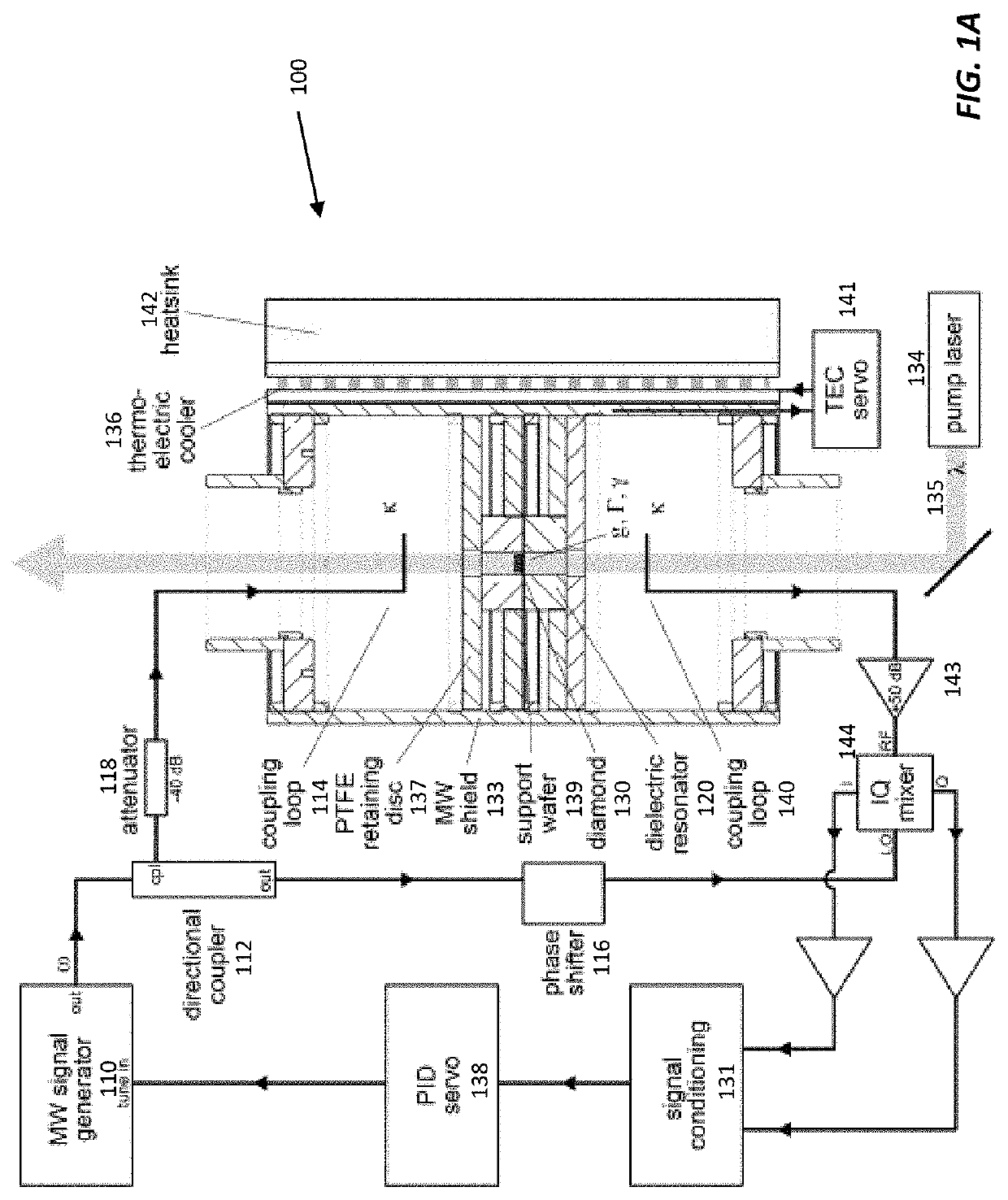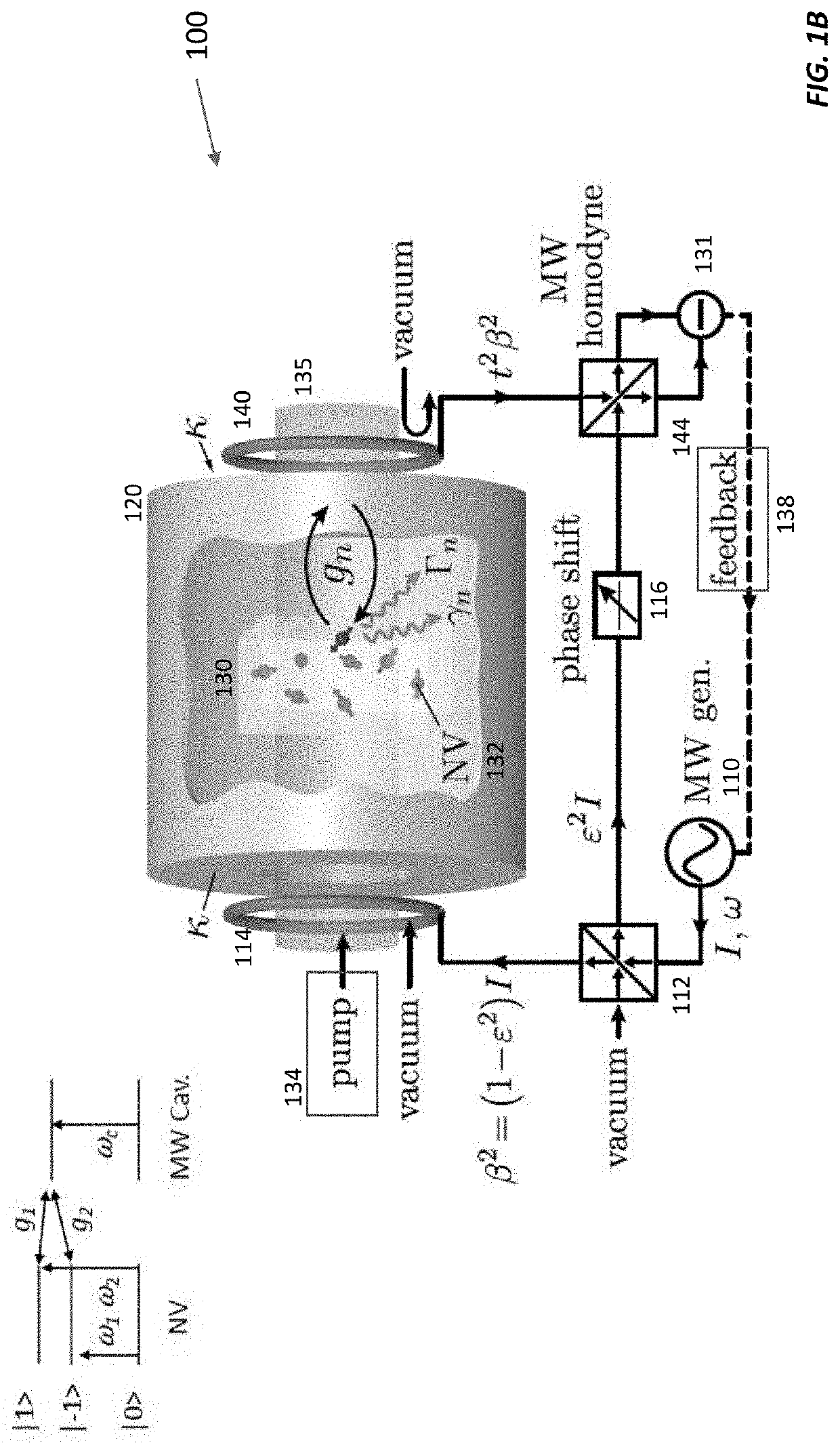Polariton-Stabilized Solid-State Spin Clock
a solid-state spin clock and polariton technology, applied in the direction of preselected time interval producing apparatus, automatic control of pulses, instruments, etc., can solve the problems of thermal noise, limit the achievable fractional frequency deviation of a quantum-stabilized oscillator at long integration times, etc., to achieve better than millihertz stability, realistically achievable stabilization, and reduce oscillator temperature dependence
- Summary
- Abstract
- Description
- Claims
- Application Information
AI Technical Summary
Benefits of technology
Problems solved by technology
Method used
Image
Examples
Embodiment Construction
[0027]A polariton-stabilized solid-state spin clock uses controlled coupling to suppress the thermal shifts of both the cavity and spin system, resulting in a stability improvement of five orders of magnitude for achievable thermal noise conditions while maintaining magnetic in-sensitivity. Combined with the large SNR of bulk NV sensors, this results in fractional frequency deviations that exceed current chip-scale atomic clocks and mechanical oscillators. A polariton-stabilized solid-state spin clock does not need precision optical elements. It can operate at ambient temperature and pressure and offers significant advantages in size, weight, and power over other clocks with similar performance. With CMOS integration and miniaturization of diamond, a polariton-stabilized solid-state spin clock enables a range of new applications using atomic-like timekeeping in a solid-state device.
[0028]Polaritonic stabilization is extensible to a variety of solid-state systems. Emitters in silicon...
PUM
 Login to View More
Login to View More Abstract
Description
Claims
Application Information
 Login to View More
Login to View More - R&D
- Intellectual Property
- Life Sciences
- Materials
- Tech Scout
- Unparalleled Data Quality
- Higher Quality Content
- 60% Fewer Hallucinations
Browse by: Latest US Patents, China's latest patents, Technical Efficacy Thesaurus, Application Domain, Technology Topic, Popular Technical Reports.
© 2025 PatSnap. All rights reserved.Legal|Privacy policy|Modern Slavery Act Transparency Statement|Sitemap|About US| Contact US: help@patsnap.com



